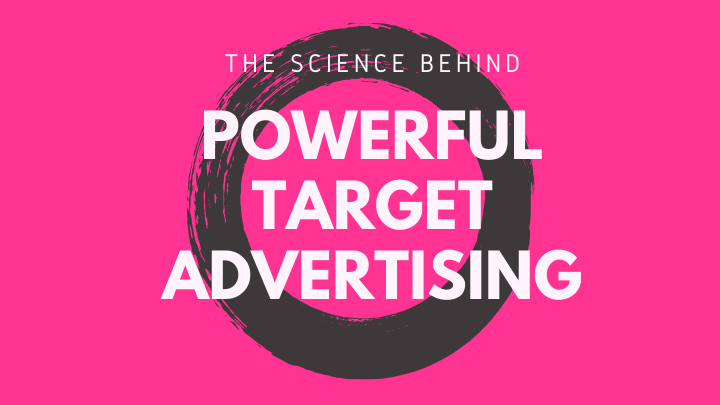How to do powerful target advertising?

You see a commercial for fried chicken, and suddenly you’re in the mood for a goodol’ leg and gravy combo. Or maybe you hear the familiar tune of a dishwashing soap commercial, and you remember that you really should buy some more before you run out. Advertising is a wonder at making us want things or think we need them. It is mix of both – BTL and online / digital. To make it look attractive, the designing and creative team uses lots of motion graphics and engaging graphic designs. We are also seeing surge of 3D Animation and Visual Effects, as now there are so many mobile apps that makes your work easy for generating such animated contents. They have huge drag and drop library / templates, from which the user can make creatives very easily.
We all know we have a shared dislike of ads. You’d be hard-pressed not to find someone complaining about a mere 5-second ad interrupting the video they are streaming or perhaps a kid ranting about pop-up ads while they scroll on their favorite social networking site. In fact, statistics show that around seven in ten people today have said they find ads annoying. Many people even say they absolutely hate ads. And yet, with this strong aversion, why do these tools still work on us at the end of the day?
Here are a few basal instincts we break down as to what exactly marketers are targeting and how.
A lot of ads target our bodies (wait for it):
No, they do not literally hit our body parts, though there are actually marketing techniques nowadays that specifically target our senses. However, for this particular point, we are talking general advertising from the days of paper ads of yore to the digital age’s online ads. In e-commerce, product photo editing is one of the most crucial elements in any campaign because it visually stimulates the audiences and creates a reaction in their other senses.
Researchers confirmed that “the mere sight of delicious food stimulates the appetite.” This becomes even more heightened with today’s technology, making things look more high definition and in brighter colors that alert our minds even more. Just like that, you’ve got a hankering for a juicy burger because they edited in those flames and those grill marks so well. This works beyond the food industry, too. A well-edited photo of a perfume ad or even a car ad will automatically resonate in our noses, especially if we’ve already associated the brand with a specific scent in our mind.
Now, beyond photography, there is also video and audio. Just look at the jump in popularity of ASMR videos. When you hear the sizzle of a grill or you see how billowy a dress looks in the perfect lighting, your mind starts excreting happy hormones. And since we all like to be happy, we end up happily buying.
Repeated exposure is a tried-and-tested conditioning strategy:
It sounds creepy to call it conditioning like we’re all being programmed or something, but that is essentially advertising. Just look to one of the oldest tools in the marketing book, jingles. They are repetitive, easy to remember, and you’d be lying if you hit the age of 30 and say you haven’t had at least a couple jingles stuck in your head and coming back to you at the most random of moments. This is a strategic way for them to help our minds associate them with certain activities, too. A laundry detergent song may come to mind when you do laundry, and just like that, their brand is the first thing you think of when you think of laundry.
Then there’s just the presence of visual ads everywhere. This is called passive advertising, even if it may not feel that way. Because we’re so used to so many ads in our environment, we don’t really give them a second glance. In fact, most people don’t remember the ads they view in general. But because it has repeatedly reached us, say, in the street, we always cross on the way to work, it is already in the subconscious. We have got a hankering for a juicy burger because they edited in those flames and those grill marks so So, even if you don’t remember the ad about shoes by the corner, your brand tendencies will lean toward that specific pair of shoes.
Social Media Marketing (Facebook, Instagram, Twitter, WhatsApp, LinkedIn and many more) plays a major role here. The advertising people also use Google Remarketing, which ‘follow’ users on another websites and audio video streaming platforms. By such way, they continuously hammer the audience.
People love to conform:
It’s in the basic human nature of people to want to conform to society. Even those who claim to be different are simply conforming to another set of ideals altogether. This is the very reason you can essentially lump people into groups despite their individualities. And the advertising world uses that to their advantage.
“Look at this popular brand everyone loves!” Now you want that shirt even if 500 other people are in line for it, particularly because those other 500 people prove to your brain that you need to have it, too. On the flip side, you have the ads that essentially scream, “We’re different! We’re not like those big machines!” and just like that, you’re in because you want to be able to use products that show how you are not of the norm. These are the very reasons trends and fads happen in the first place.
In the time of COVID-19 lockdown, we have seen advertising bombarding of multiple OTT (Over The Top) platforms. Leaving aside BTL activities, they were everywhere – radio, TV, mobile apps, YouTube, games and many more. As they have content for age genre, they target each gender and each age group continuously. Studies show that conforming comes from the basal neural signals also involved in reinforcement learning. We tend to see what garners positivity from others, and we stick to that. You can deep dive a study on it, too.
So, there you have it. Advertising works, even if we fight the machine.
